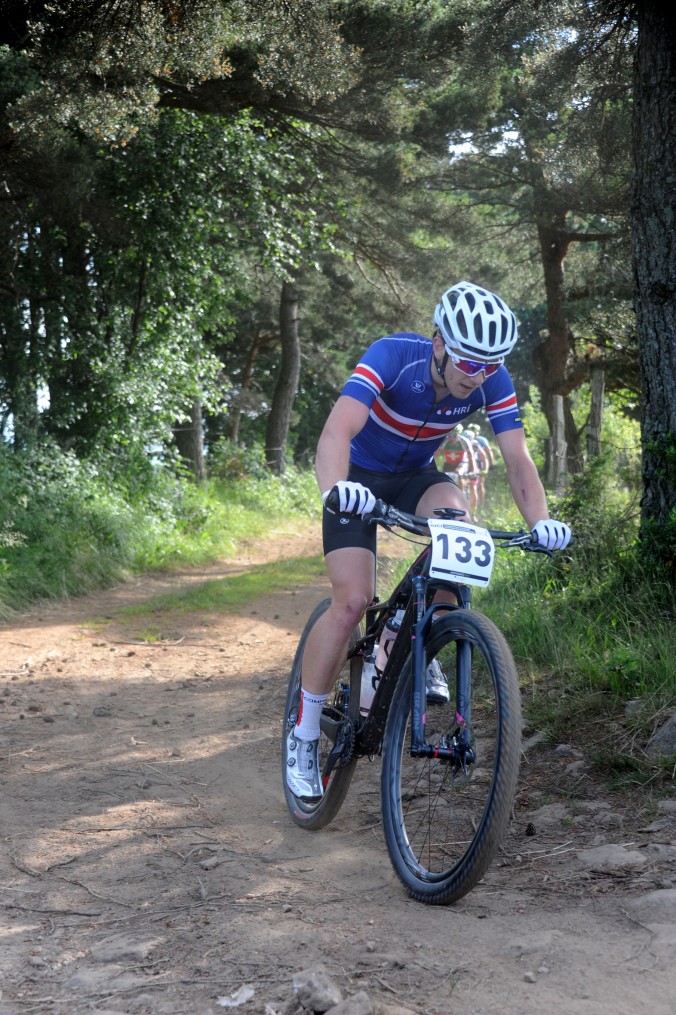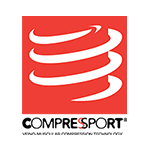I remember back in 2012 when I was in France for the UCI XCO/DHI World Cup in Val d’ Isere. I wasn’t there to race, I wasn’t even there to ride a bike. I was there with Iðunn and my Australian friend Jason, to watch the race and take some photos. When talking about the event, I got into the typical thinking, saying to myself I’d love to race at this level some time in my life. But I wasn’t talking about any plans or goals, I was daydreaming.
Last week me and my trusty do-it-all assistant/girlfriend/team manager Iðunn, took a 1300km drive from our home in Rotterdam, through Belgium and into France, eventually landing in Rodez in the middle of the country. We were there for the UCI Marathon cross country World Championships, held in a small town called Laissac. One of the toughest kinds of mountain bike racing, this would be Iceland’s, and my, first ever mountain biking World Championship participation.
Featuring 90km of nasty climbs, tricky descents and fast transition sections, along with approximately 3000 meters of climbing, this looked on paper to become the toughest race on my resume as a cyclist. Add in the world class level of elite riders picked by their national federations to represent their country, and you’ve got a race that might be extremely tough for an experienced rider, but surely a little bit scary for the new kid on the block.
After we settled in the smallest hotel room I’ve ever seen, at 4 in the morning on Tuesday after 18 hours of traveling, it took a few seconds to fall asleep, batteries completely empty. The next day the usual routine started, unpacking the bike, assembling everything and checking race schedule and organization. Part of being the only rider from my country, with my girlfriend as my assistant, at the biggest yearly event in the sport, is having to do a lot of things that have nothing to do with actually riding a bike. I quite like it, but it’s time and energy consuming to make sure all the information about the team is correct, showing up for a manager’s meeting and picking up numbers/accreditation and everything else the team needs to race. I’m sure in time this will get better and easier on the riders, but for now I enjoy being part of the organization as well as racing for Iceland.
My first pre-ride of the course was a little big unsettling. I started to ride from Laissac where the official start is, and immediately got into some steep and loose climbing, followed by fun singletrack with some deep ditches that were waiting to eat up my front wheel and send me flying over the bars. This went on for about 20 kilometers, which took about 2 hours at the “not easy but not too fast” pace I was fixed on. Naturally I assumed the rest of the 90km course was just like the first 20km, and I started thinking I might be in over my head. I didn’t have much time to ride the rest of the course over the few days before the race, so I knew I would be racing the rest of the course blindingly, which is something I believe can make a rider better at handling unexpected situations.
After doing a couple of days of easy riding to keep the legs fresh, I felt the heat was having a serious impact on performance and my ability to stay hydrated and full of energy. The average temperature over the days before race day was around 30-35°C which is way too much for a person from Iceland, or any other Nordic country. The forecast was on our side though, on Friday it looked like Sunday, the day of the race, would be the coldest one in the week, and when accompanied by the early start at 8:45 am, the temperature would start around 17 degrees and go up to 30 later in the day.
Race day came, and I somehow managed to sleep for about 6 hours during the night, not getting much help from the fact that we had to wake up around 6 am in order to get enough food and prepare everything to race. I had so much to eat, I felt like exploding, but apparently that is exactly what most endurance racers recommend for fueling up before a long race. I’m very goal driven, and I try to set myself some realistic goals when racing internationally. My favorite goal is to place in the top 50% in a top level race, it sort of gives me the feeling that I belong on that level, being better than half the field. For a race like the World Champs however, I was being realistic by telling myself I was there because I’ve put in the work and given myself the opportunity to represent my country. I had been told this would be a 4-5 hour race for most of the racers, with last year’s win coming in around 4 hours. There were 143 names on the list, so I set simple goals: don’t be the last one in, and try to stay under 5 hours.
I finished my 30 minute warmup and went to the starting box, which had some big names in it. The second to last box meant I was in a difficult position for getting to the front, but in a long race like this I wasn’t really aiming for that so I was happy to start where I was. Around me were guys I admire and follow like a fan kid: Jaroslav Kulhavy, Howard Grotts and Emil Lindgren, along with Todd Wells and Jeremiah Bishop. Some pretty strong guys going for a big result. Soon I heard the 60 second warning, then 30 seconds, then 15 seconds. The gun went off and I started by sprinting hard into the next corner and narrowly escaped a pileup caused by too many guys trying to go fast at the same time. The pack spread out pretty fast, but as the first climb came after only a few minutes, it felt like everyone was together again going up. The first climb was about 8 minutes long and I moved through a few spots while there, making me feel good but also wondering if I was starting a long race too fast. After the first descent there were just about 30 minutes to the first technical zone, where Iðunn was with the first bottle of 4 over the day. We had planned it as well as possible given the situation. Iðunn had to handle all tech support by herself, surrounded by huge support teams with everything from energy gels to spare wheels. With 7 tech zones in the course, and one of them being used twice, as the 1st and the 4th, we decided to put Iðunn there to be able to hand me 2 bottles each time I went by. This meant I was able to start with 1 small bottle to stay light, and swap it for 2 big ones at the first tech zone, and then 2 more bottles at the halfway point at tech zone 4. 5 bottles for 5 hours sounded like a good plan, and it went smoothly without problems.
When I reached the first tech zone I was sitting between small groups, about 6 guys in total. In a few kilometers the groups merged and I managed to stay in there, which really helped keep the pace high and push myself through a long day of suffering. After about 1 hour of racing I was starting to feel fatigue in the legs in the steepest climbs, but I was determined to stay in the pack as long as possible. Along with the long, steep climbs and loose descents, the course also featured some fast, relatively smooth, transition sections, and some very nice and technical singletrack. There was almost zero asphalt except for the start/finish area, and there were even a few river crossings to make things interesting. The race went on without much changing until the 4 hour mark when we started to approach the final big climb of the day. I had been dropped from the group and rejoined it a few times and I was certain that I wasn’t going to hold on when going into the last hour, but then the surprise of the day happened. The final climb was very simple, only a grass hill followed by a long, flat field, before the final descent into Laissac. As the group started to climb, I saw a few guy up ahead who seemed to be shutting down after perhaps starting too fast. I kept the heart rate as high as possible, with the fatigue forcing it down, and the legs aching and begging me to slow down. To my surprise I started to ride away from some of the guys in the group I had stayed with all day, and when the group started to stretch on the steep parts, I only gained a few bike lengths. Noticing this, I started to feel confident and excited that I was strong at this stage in the race, so I just kept going, all the way to the top. Reaching the top, I shook off the only remaining rider, a very nice guy from Germany who I had shared smiles and laughs with during some awkward times in the race. I put it in high gear, and started to ride away from everyone, but reminding myself that I still had about 1 hour to go.
The final descent was a mixture of dead legs, exhausted mind and excitement for being close to the finish line. I picked up a few more guys, from Latvia and finally a Dutchman, only a few km’s from the line. In the final few hundred meters I noticed some of the guys from my group had closed the gap and had overtaken the Dutchman, but I kept going and finished ahead of the chasers, putting a very positive end to an incredibly tough day in the saddle.
The feeling is indescribable, finishing my first World Championships. Never say never, but the chances of ever racing at the Olympics are slim to say the least, so that means the Worlds are the biggest races available to me, and I’ve just finished one of them, with a second one coming in exactly one week. It took me a while before I started to feel the tiredness, fatigue, and general shit feeling after getting off the bike. Salt stains everywhere on my national team jersey, and my bike so completely soaked in mud, there was no telling the color of the frame. I finished with a time of 4 hours and 40 minutes, some 20 minutes faster than I hoped for. But the real surprise was finding out I had not only finished in the top 100, I was in 75th place of 143 starters, meaning I was just around the middle. This is beyond my wildest dreams of success, and was probably the biggest confirmation of my status as a professional cyclist I’ve ever seen.
I’d like to thank Kria Cycles for supplying me with the Specialized Epic, a bike that can handle the abuse of a long, hard race, and still climb like a rocket. The guys in Hreysti helped me out with all the energy drinks, gels and bars I needed for the race and training before it, Garmin Iceland provided the excellent device that is the Edge 1000, and Iron Viking got me Compressport socks and compression wear to be able to recover faster than normal. Without financial help from Novator, and a special group of friends (you know who you are!) I would not be here right now, and none of the racing opportunities I’ve had would have been possible.
Thank you all for believing in me, supporting me, and being part of this adventure!











